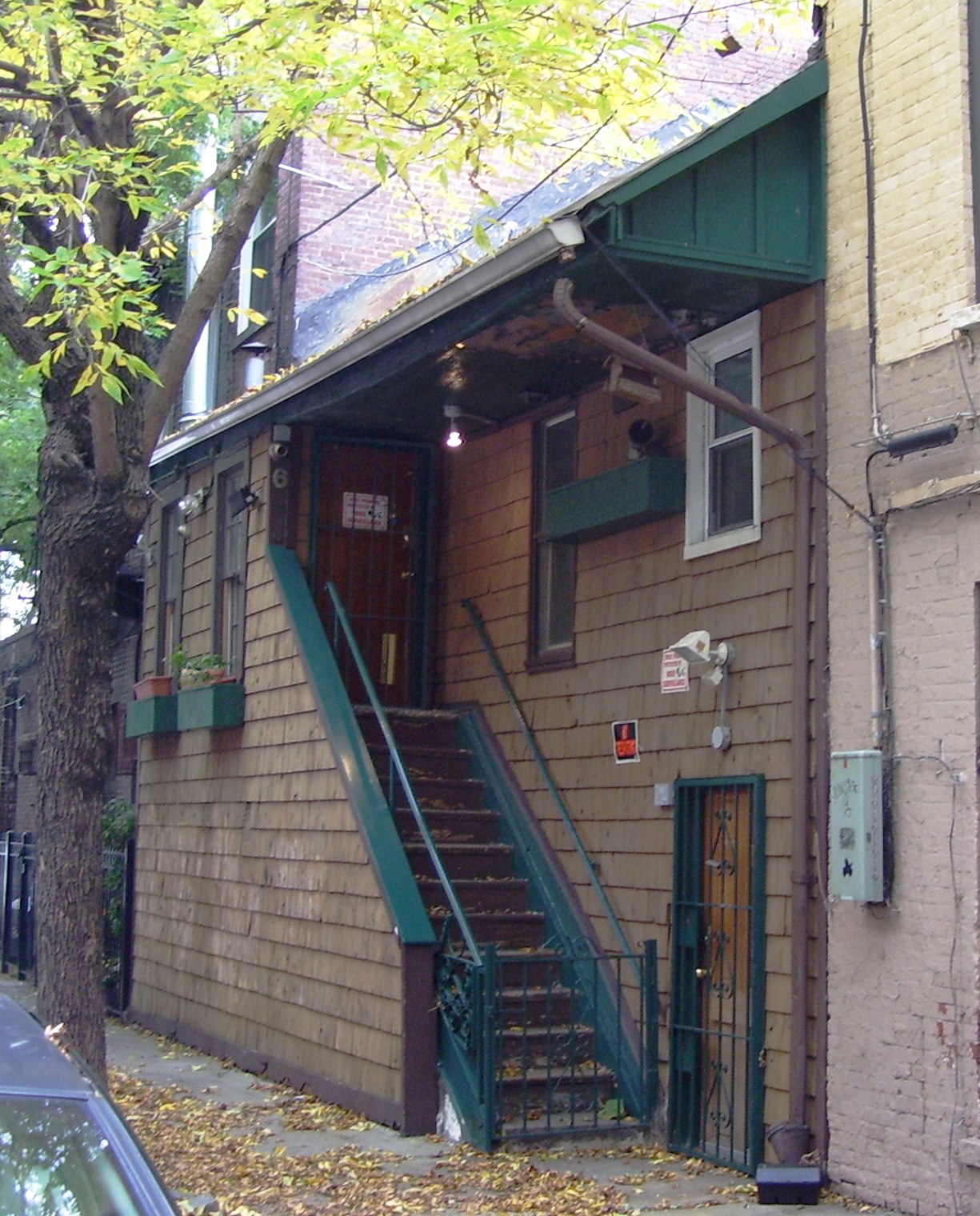Weehawken Street Historic District on:
[Wikipedia]
[Google]
[Amazon]

 Weehawken Street is a short street located in
Weehawken Street is a short street located in
from the

 Weehawken Street is a short street located in
Weehawken Street is a short street located in New York City
New York, often called New York City or NYC, is the List of United States cities by population, most populous city in the United States. With a 2020 population of 8,804,190 distributed over , New York City is also the L ...
's West Village, in the borough
A borough is an administrative division in various English-speaking countries. In principle, the term ''borough'' designates a self-governing walled town, although in practice, official use of the term varies widely.
History
In the Middle Ag ...
of Manhattan
Manhattan (), known regionally as the City, is the most densely populated and geographically smallest of the five boroughs of New York City. The borough is also coextensive with New York County, one of the original counties of the U.S. state ...
, one block from and parallel to West
West or Occident is one of the four cardinal directions or points of the compass. It is the opposite direction from east and is the direction in which the Sunset, Sun sets on the Earth.
Etymology
The word "west" is a Germanic languages, German ...
and Washington Streets, running between Christopher Street
Christopher Street is a street in the West Village neighborhood of the New York City borough of Manhattan. It is the continuation of 9th Street west of Sixth Avenue.
It is most notable for the Stonewall Inn, which is located on Christopher St ...
and West 10th Street.
The land around Weehawken Street was at one time part of Newgate State Prison, built in 1796-97, until the prison was closed and razed and the city in 1829 sold the prison property off in lots. It held on to a strip of property, creating Weehawken Street and opening a produce market on the site, building the Market House in 1834. The market—officially the Greenwich Market, but informally referred to as "Weehawken Market"—was unsuccessful and was closed in 1844, with the property sold to private buyers. Over the years, the area's buildings were used for dwellings, stables, boarding houses, maritime-related businesses, transportation-related businesses, clothing and supply stores and other miscellaneous industries, but a dominant use was for saloons and liquor stores, including bars and clubs catering to a "rough trade" gay clientele in the late 20th century.Weehawken Street Historic District: Designation Reportfrom the
New York City Landmarks Preservation Commission
The New York City Landmarks Preservation Commission (LPC) is the New York City agency charged with administering the city's Landmarks Preservation Law. The LPC is responsible for protecting New York City's architecturally, historically, and cu ...
, dated May 2, 2006
Historic district
On May 2, 2006, theNew York City Landmarks Preservation Commission
The New York City Landmarks Preservation Commission (LPC) is the New York City agency charged with administering the city's Landmarks Preservation Law. The LPC is responsible for protecting New York City's architecturally, historically, and cu ...
designated all the buildings on Weehawken Street, plus additional properties on West Street and Christopher Street, as the Weehawken Street Historic District:
The picturesque enclave of fourteen buildings and the street plan that together comprise the Weehawken Street Historic District represents several phases of construction spanning a century of development along Greenwich Village's Hudson River waterfront, from 1830 to 1938. The architecture illustrates the area's long history as a place of dwelling, industry, and commerce, much of it maritime-related, and is a rare surviving example of this once typical development pattern on Manhattan's west side waterfront. Many of the properties in the historic district were associated with the families of prominent long-term owners, such as former Mayor Stephen Allen, Cornelius V.S. Roosevelt, lawyer Edmund R. Terry, brewer-distiller Patrick Skelly, and linen merchant James Dean. In addition, several significant maritime-related industries were located within the historic district for a century, between 1884 and 1984.The creation of the district was largely due to the efforts of the
Greenwich Village Society for Historic Preservation
Village Preservation (formerly the Greenwich Village Society for Historic Preservation, or GVSHP) is a non-profit organization which advocates for the preservation of architecture and culture in several neighborhoods of Lower Manhattan, New York. ...
, a preservation advocacy group active in the area.
References
;NotesExternal links
* {{Streets of Manhattan, state=collapsed Streets in Manhattan West Village Historic districts in Lower Manhattan New York City Designated Landmarks in Manhattan New York City designated historic districts